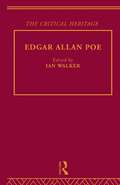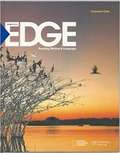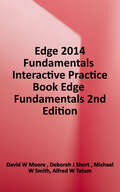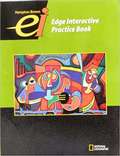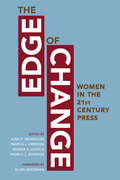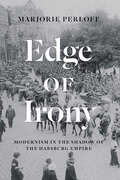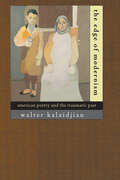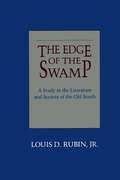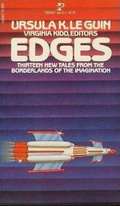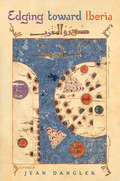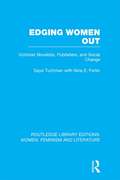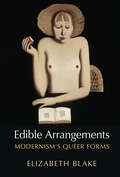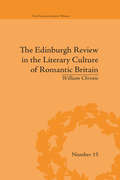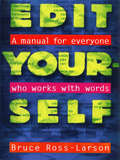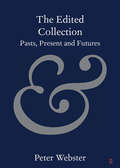- Table View
- List View
Edgar Allan Poe in Context
by Kevin J. HayesEdgar Allan Poe mastered a variety of literary forms over the course of his brief and turbulent career. As a storyteller, Poe defied convention by creating Gothic tales of mystery, horror, and suspense that remain widely popular today. This collection demonstrates how Poe's experience of early nineteenth-century American life fueled his iconoclasm and shaped his literary legacy. Rather than provide critical explications of his writings, each essay explores one aspect of Poe's immediate environment, using pertinent writings - verse, fiction, reviews, and essays - to suit. Examining his geographical, social, and literary contexts, as well as those created by the publishing industry and advances in science and technology, the essays paint an unprecedented portrait of Poe's life and times. Written for a wide audience, the collection will offer scholars and students of American literature, historians, and general readers new insight into Poe's rich and complex work.
Edgar Allen Poe: The Critical Heritage (Critical Heritage Ser.)
by Ian WalkerThis set comprises 40 volumes covering nineteenth and twentieth century European and American authors. These volumes will be available as a complete set, mini boxed sets (by theme) or as individual volumes. This second set compliments the first 68 volume set of Critical Heritage published by Routledge in October 1995.
Edge: Reading, Writing & Language (A Interactive Practice Book, Level A)
by David W. Moore Deborah J. Short Michael W. Smith Alfred W. TatumFull-color, interactive reading selections, ample practice with vocabulary, reading and literary analysis skills.
EDGE: Reading, Writing & Language
by David W. Moore Deborah J. Short Michael W. Smith Alfred W. Tatum René Saldaña Jr.Edge is a leveled core reading/language arts program designed for striving readers and ESL students in grades 9-12. Edge is designed to help prepare all students for college and career success with dynamic National Geographic content and authentic and multicultural literature. Edge was built around relevant and motivating content, preparation for success on the new CCSS tests, and systematic and focused teaching materials, all while incorporating and covering the Common Core State Standards. The reading selections in Edge were specifically chosen to engage adolescent striving readers, get students excited about reading, and create a context for discussion and learning. Program authors Alfred Tatum, Michael Smith, and David Moore have conducted decades of research on how to select literature that engages and inspires adolescent striving readers as well as incorporate best, research-based teaching practices to ensure success for all students, increase reading and comprehension levels, and prepare students for success beyond the high school classroom.
Edge: Grammar and Writing (Practice Masters)
by National Geographic LearningEdge Grammar and Writing Practice Masters
Edge 2014 B: Grammar And Writing Practice Book (Edge Series)
by Hampton-BrownMultiple practice and review pages for each grammar skill, contextualized application of grammar skills through writing.
Edge 2014 Fundamentals: Interactive Practice Book (Edge Fundamentals)
by David W. Moore Deborah J. Short Michael W. Smith Alfred W. TatumInteractive reading selections, ample practice with vocabulary, reading and literary analysis skills.
Edge Level B Interactive (Practice Book)
by National Geographic LearningInteractive reading selections. Ample practice with vocabulary, reading, and literary analysis skills.
Edge Level C Interactive: Practice Book (Hampton-Brown Edge: Reading, Writing, & Language ©2009)
by National Geographic Learning National Geographic LearningAmple practice with vocabulary, reading, and literary analysis skills.
The Edge of Change: Women in the Twenty-First-Century Press
by Catalina Camia Kathleen Carroll Pamela J. Creedon Paula Lynn Ellis Helen E Fisher Dorothy Butler Gilliam Ellen Goodman Sharon Grigsby Carol Guzy Kirsten Hampton Cathy Henkel Pamela J. Johnson Jane Kirtley Jan Leach Caroline Little Wanda S. Lloyd Arlene Notoro Morgan June O. Nicholson Geneva Overholser Marty Petty Deb Price Donna M Reed Sandra Mims Rowe Peggy Simpson Margaret Sullivan Julia Wallace Keven Ann WilleyContaining nearly three dozen original essays penned by the nation's leading newspaper journalists, editors, and executives, this book advances current discussions regarding women in journalism. Surveying the past quarter century, the book's contributors highlight the unprecedented influence American women have had on the news industry, especially newspapers, and look ahead to the future for women in news. Acclaimed anthropologist and author Helen E. Fisher adds her perspective in examining the role of women across millennia and how the talents of women are changing social and economic life in this global age. Prominent female voices in journalism provide critical perspectives on the challenges women face in today's news organizations, such as connecting with diverse audiences, educating readers about international issues and cultures, maintaining credibility, negotiating media consolidation and corporate pressures, and overcoming the persistent barriers to professional advancement. A powerful and complex assessment of how women are transforming the news industry, The Edge of Change explores how the news industry might implement further reforms aimed at creating a more inclusive journalistic community. Contributors are Catalina Camia, Kathleen Carroll, Pamela J. Creedon, Paula Lynn Ellis, Helen E. Fisher, Dorothy Butler Gilliam, Ellen Goodman, Sharon Grigsby, Carol Guzy, Kirsten Scharnberg Hampton, Cathy Henkel, Pamela J. Johnson, Jane Kirtley, Jan Leach, Caroline Little, Wanda S. Lloyd, Arlene Notoro Morgan, June O. Nicholson, Geneva Overholser, Marty Petty, Deb Price, Donna M. Reed, Sandra Mims Rowe, Peggy Simpson, Margaret Sullivan, Julia Wallace, and Keven Ann Willey.
Edge of Irony: Modernism in the Shadow of the Habsburg Empire
by Marjorie PerloffAmong the brilliant writers and thinkers who emerged from the multicultural and multilingual world of the Austro-Hungarian Empire were Joseph Roth, Robert Musil, and Ludwig Wittgenstein. For them, the trauma of World War I included the sudden loss of the geographical entity into which they had been born: in 1918, the empire was dissolved overnight, leaving Austria a small, fragile republic that would last only twenty years before being annexed by Hitler's Third Reich. In this major reconsideration of European modernism, Marjorie Perloff identifies and explores the aesthetic world that emerged from the rubble of Vienna and other former Habsburg territories--an "Austro-Modernism" that produced a major body of drama, fiction, poetry, and autobiography. Perloff explores works ranging from Karl Kraus's drama The Last Days of Mankind and Elias Canetti's memoir The Tongue Set Free to Ludwig Wittgenstein's notebooks and Paul Celan's lyric poetry. Throughout, she shows that Austro-Modernist literature is characterized less by the formal and technical inventions of a modernism familiar to us in the work of Joyce and Pound, Dada and Futurism, than by a radical irony beneath a seemingly conventional surface, an acute sense of exile, and a sensibility more erotic and quixotic than that of its German contemporaries. Skeptical and disillusioned, Austro-Modernism prefers to ask questions rather than formulate answers.
The Edge of Modernism: American Poetry and the Traumatic Past
by Walter KalaidjianIn The Edge of Modernism, Walter Kalaidjian explores American poetry on genocide, the Holocaust, and total war as well as on postwar social antagonisms, racial oppression, and domestic violence. By asking what it means for traumatic memory to have agency in the American verse tradition, Kalaidjian creates an original historical account of how American poets became witnesses, often unconsciously, to modern extremity. Combining psychoanalytic theory and cultural studies, this intense, sweeping account of modern poetics analyzes the ways in which literary form gives testimony to the trauma of twentieth-century history. Through close readings of well-known and less familiar poets—among them Langston Hughes, Countee Cullen, Claude McKay, Edwin Rolfe, Sylvia Plath, Adrienne Rich, Peter Balakian, Rachel Blau DuPlessis, Anne Sexton, and Anthony Hecht—Kalaidjian discerns the latent "edge" of modern trauma as it cuts through the literary representations, themes, and formal techniques of twentieth-century American poetics. In this way, The Edge of Modernism advances an innovative and dynamic model of modern periodization.
The Edge of the Swamp: A Study in the Literature and Society of the Old South
by Louis D. Rubin Jr.The flowering of literary imagination known as the American Renaissance had few roots in the South. While Hawthorne, Emerson, Melville, Thoreau, and Whitman were creating a body of work that would endure, the only southern writer making a lasting contribution was Edgar Allan Poe. This failure on the part of antebellum southern writers has long been a subject of debate among students of southern history and literature. Now one of the region's most distinguished men of letters offers a cogently argued and gracefully written account of the circumstances that prevented early southern writers from creating transcendent works of art.Louis D. Rubin, Jr., brings forty years of critical integrity and imaginative involvement with the history and literature of the South to his informal inquiry into the foundations of the southern literary imagination. His exploration centers on the lives and works of three of the most important writers of the pre-Civil War South: Poe, William Gilmore Simms, and Henry Timrod.In a close and highly original reading of Poe's poetry and fiction, Rubin shows just how profoundly growing up in Richmond, Virginia, influenced that writer. The sole author of the Old South whose work has endured did not use southern settings or concern himself with his region's history or politics. Poe was, according to Rubin, in active rebellion against the middle-class community of Richmond and its materialistic values.Simms, on the other hand, aspired to the plantation society ideal of his native Charleston, South Carolina. He was not the most devoted and energetic of southern writers and one of the country's best-known and most respected literary figures before the Civil War. Rubin finds an explanation for much of the lost promise of antebellum southern literature in Simms's career. Here was a talented man who got caught up in the politically obsessed plantation community of Charleston, becoming an apologist for the system and an ardent defender of slavery.Timrod, also a Charlestonian native, was a highly gifted poet whose work attained the stature of literature when the Civil War gave him a theme. He was known as the poet laureate of the Confederacy. Only when his region was locked in a desperate military struggle for the right to exist did he suddenly find his enduring voice.Anyone interested in southern life and literature will welcome his provocative and engaging new look at southern writing from one of the region's most perceptive critics.
Edges
by Ursula K. Le GuinThis anthology of stories of the imagination includes The Ballad of Bowsprit Bear's Stead by Damien Broderick, Omens by Carol Emschwilller, Touch the Earth by Scott Sanders, The Other Magus by Avram Davidson, Peek-a-Boom by Sonya Dorman, Suzanne Delage by Gene Wolfe, The Finger by Naomi Mitchison, Barranca, King of the Tree Streets by Lowry Pei, Thomas in Yahvestan by George P. Elliott, The Vengeance of Hera by Thomas M. Disch, Falling by Raylyn Moore, Father Returns from the Mountain by Luis Urrea, The Oracle by M. J. Engh Some of these stories include topics and language considered for adults only by some people.
Edging Toward Iberia
by Jean DanglerNonmodern Iberia was a fluid space of shifting political kingdoms and culturally diverse communities. Scholars have long used a series of obsolete investigative frameworks such as the Reconquista, along with modern ideas of nation-states, periodization, and geography that are inadequate to the study of Iberia’s complex heterogeneity. In Edging Toward Iberia Jean Dangler argues that new tools and frameworks for research are needed. She proposes a combination of network theory by Manuel Castells and World-Systems Analysis as devised by Immanuel Wallerstein to show how network and system principles can be employed to conceptualize and analyze nonmodern Iberia in more comprehensive ways. Network principles are applied to the well-known themes of medieval trade and travel, along with the socioeconomic conditions of feudalism, slavery, and poverty to demonstrate how questions of power and temporal-historical change may be addressed through system tenets. Edging Toward Iberia challenges current historical and literary research methods and brings a fresh perspective on the examination of politics, identity, and culture.
Edging Women Out: Victorian Novelists, Publishers and Social Change (Routledge Library Editions: Women, Feminism and Literature)
by Gaye TuchmanBefore about 1840, there was little prestige attached to the writing of novels, and most English novelists were women. By the turn of the twentieth century, "men of letters" acclaimed novels as a form of great literature, and most critically successful novelists were men. In the book, sociologist Gaye Tuchman examines how men succeeded in redefining a form of culture and in invading a white-collar occupation previously practiced mostly by women. Tuchman documents how men gradually supplanted women as novelists once novel-writing was perceived as potentially profitable, in part because of changes in the system of publishing and rewarding authors. Drawing on unusual data ranging from the archives of Macmillan and company (London) to an analysis of the lives and accomplishments of authors listed in the Dictionary of National Biography, she shows that rising literacy and the centralization of the publishing industry in London after 1840 increased literary opportunities and fostered men’s success as novelists. Men redefined the nature of a good novel and applied a double standard in critically evaluating literary works by men and by women. They also received better contracts than women for novels of equivalent quality and sales. They were able to accomplish this, says Tuchman, because they were to a large extent the culture brokers – the publishers, publishers’ readers, and reviewers of an elite art form. Both a sociological study of occupational gender transformation and a historical study of writing and publishing, this book will be a rich resource for students of the sociology of culture, literary criticism, and women’s studies.
An Edible Alphabet
by Bonnie ChristensenEach page shows a letter of the alphabet in capital and small, a picture with the name of a plant, and pictures showing how the plant is used. A multi-cultural, multi-generational cast of characters makes this an unusual alphabet.
Edible Arrangements: Modernism's Queer Forms
by Elizabeth BlakeIn Edible Arrangements, Elizabeth Blake explores the way modernist writing about eating delves into larger questions about bodily and literary pleasure. Drawing on insights from the field of food studies, she makes dual interventions into queer theory and modernist studies: first, locating an embrace of queerness within modernist depictions of the pleasure of eating, and second, showing how this queer consumption shapes modernist notions of literary form, expanding and reshaping conventional genres. Drawing from a promiscuous archive that cuts across boundaries of geography and canonicity, Blake demonstrates how modernist authors draw on this consuming queerness to restructure a range of literary forms. Each chapter constellates a set of seemingly disparate writers working in related modes—such as the satirical writings of Richard Bruce Nugent, Virginia Woolf, and Katherine Mansfield—in order to demonstrate how writing about eating can both unsettle the norms of bodily pleasure and those of genre itself.
The Edible Woman (MAXNotes Literature Guides)
by Jeffrey LilburnREA's MAXnotes for Margaret Atwood's The Edible Woman MAXnotes offer a fresh look at masterpieces of literature, presented in a lively and interesting fashion. Written by literary experts who currently teach the subject, MAXnotes will enhance your understanding and enjoyment of the work. MAXnotes are designed to stimulate independent thought about the literary work by raising various issues and thought-provoking ideas and questions. MAXnotes cover the essentials of what one should know about each work, including an overall summary, character lists, an explanation and discussion of the plot, the work's historical context, illustrations to convey the mood of the work, and a biography of the author. Each chapter is individually summarized and analyzed, and has study questions and answers.
Edinburgh: Picturesque Notes
by Robert Louis StevensonFirst published in 1879, Edinburgh: Picturesque Notes is among the most vivid of Robert Louis Stevenson’s writings. His passion for Auld Reekie never clouded his wry wit, and his enthusiasm for the picturesque detail and the savory anecdote will delight readers today as much as they scandalized his contemporaries. Perhaps best known as the author of Treasure Island and other children’s literature, Robert Louis Stevenson was a prolific novelist, playwright, essayist, and travel writer.
The Edinburgh Lectures on Mental Science
by Thomas TrowardThis anthology is a thorough introduction to classic literature for those who have not yet experienced these literary masterworks. For those who have known and loved these works in the past, this is an invitation to reunite with old friends in a fresh new format. From Shakespeare s finesse to Oscar Wilde s wit, this unique collection brings together works as diverse and influential as The Pilgrim s Progress and Othello. As an anthology that invites readers to immerse themselves in the masterpieces of the literary giants, it is must-have addition to any library.
The Edinburgh Review in the Literary Culture of Romantic Britain: Mammoth and Megalonyx (The Enlightenment World #15)
by William ChristieFrom its first issue, published on the 10th October 1802, Francis Jeffrey's "Edinburgh Review" established a strong reputation and exerted a powerful influence. This is a literary study of the "Edinburgh Review" for over fifty years. It contextualizes the periodical within the culture wars of the Romantic era.
Edit Yourself: A Manual for Everyone Who Words with Words
by Bruce Ross-Larson"A strong new entry for the reference shelf of anyone who writes to be understood--or would like to."--Pittsburgh Press In the first part of this useful book, the author shows how to solve common problems of writing. The reader will learn how to recognize common problems of writing. The reader will learn how to recognize words and phrases that should be cut; how to shorten cumbersome sentences; how to arrange the elements of pairs, series, and compound subjects and predicates; how to recognize and rectify mismanaged participles; and how to be on the lookout for the better word. The second part of the book consists of more than 1500 recommendations for cuts, changes, and comparisons that editors make to produce writing that is concise and effective.
The Edited Collection: Pasts, Present and Futures (Elements in Publishing and Book Culture)
by Peter WebsterEdited collections are widely supposed to contain lesser work than scholarly journals; to be incoherent as volumes, no more than the sum of their parts; and to be less visible to potential readers once published. It is also often taken as axiomatic that those who make decisions in relation to hiring, promotion, tenure, and funding do so agree. To publish in or edit an essay collection is thought to risk being penalised for the format before even a word is read. After examining the origins of this critique, this Element explores the modern history of the edited collection and the particular roles it has played. It examines each component part of the critique, showing that they are either largely unfounded or susceptible of solution. It proposes the edited collection as a model of one possible idea of scholarly community: collaboration, trust, and mutual obligation in pursuit of a wider good.
Edith Wharton: New Critical Essays (Routledge Library Editions: The Nineteenth-Century Novel #2)
by Alfred Bendixen Annette ZilversmitFirst published in 1992, this volume of essays celebrates the revival of Edith Wharton’s critical reputation. It offers a variety of approaches to the work of Wharton and examines largely neglected texts. It differs from many other collections of Wharton criticism in its insistence that the entire body of Wharton’s work deserves attention. This book will be of interest in those studying nineteenth century and American literature.

